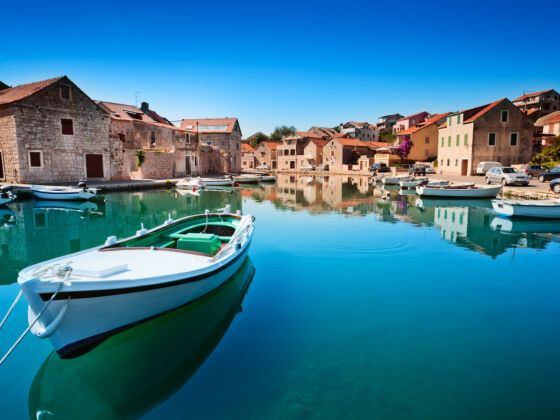In Dol, a town named for the Croatian word for “valley,” we followed a dirt path to Marnel’s friend Jimmy’s house. Jimmy smiled shyly and grabbed the collar of his zippy black mutt while we climbed up to the rooftop patio.
Jimmy’s roommates were sprawled on a blanket smoking cigarettes. One of them, an Asian man named Taku, greeted me in English, and then began talking to Marnel in fast Croatian.
